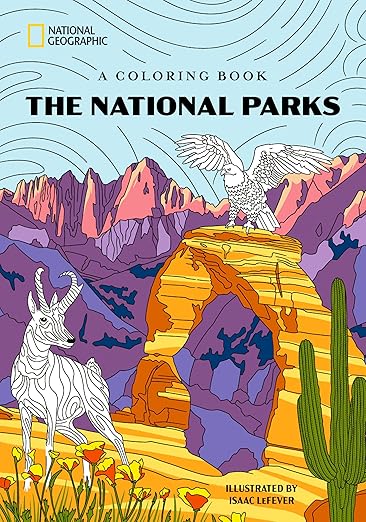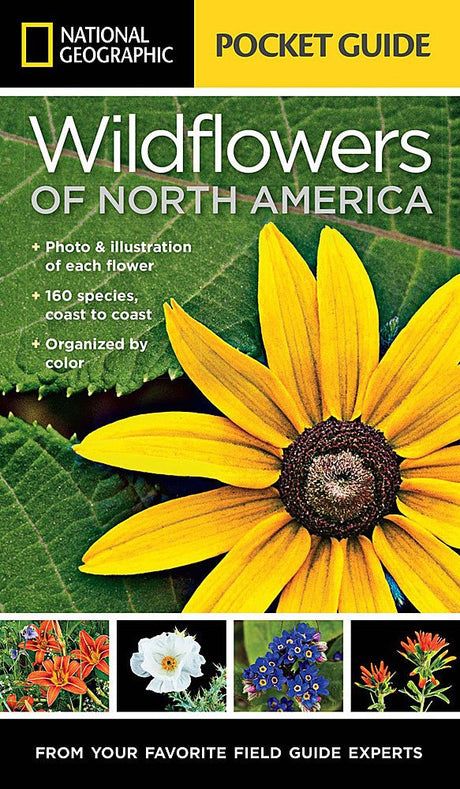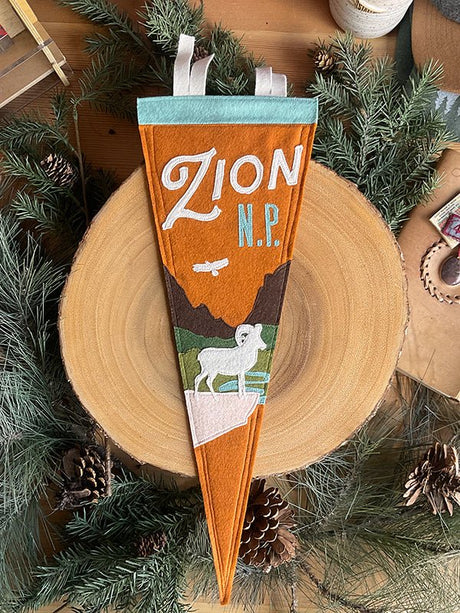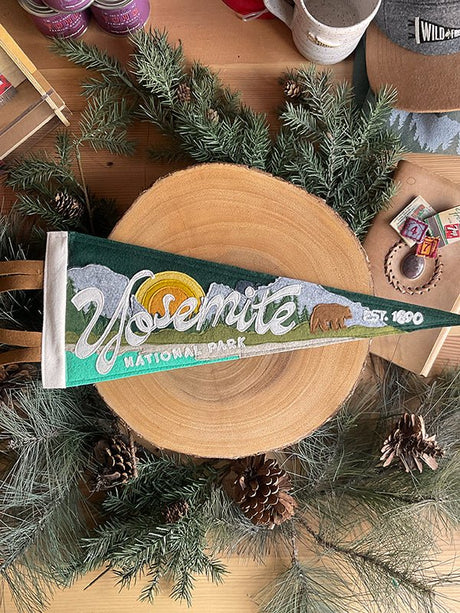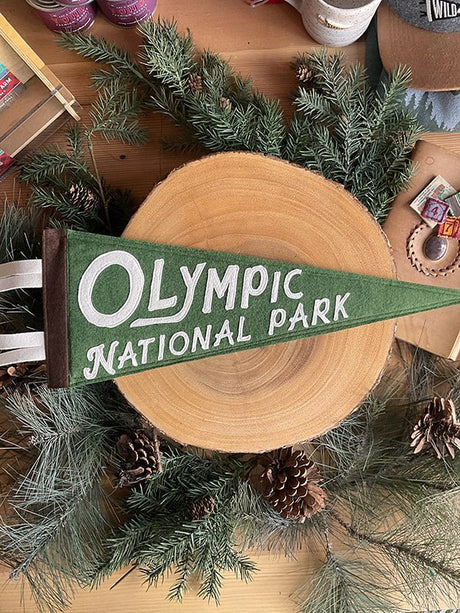
Introduction
National parks in the United States offer breathtaking landscapes, unique ecosystems, and diverse wildlife for millions of visitors each year. Travel planning and timing are crucial to make the most of your national park adventure. The US Park Pass provides access to over 2,000 federal recreation sites, including all national parks, which makes it an invaluable resource for those looking to explore these natural wonders.
Best Time to Visit US National Parks: Month-by-Month Guide
Visiting national parks at the right time is essential for an enjoyable and memorable experience. Factors such as weather, crowds, and park-specific events play a significant role in determining the best time to explore these natural wonders. This month-by-month guide offers a general overview to help you plan your next national park adventure.
January
Winter is in full swing, and many parks experience freezing temperatures and snow. However, it's an excellent time to visit parks like Yellowstone and Yosemite for winter sports and stunning snowy landscapes. Keep in mind that some park facilities and roads may be closed during this time.
February
Similar to January, February is still a chilly month in most parks. Nonetheless, parks like Everglades, Joshua Tree, and Death Valley offer milder temperatures, making them ideal for hiking and camping. Plus, you'll encounter fewer crowds during this off-peak period.
March
With the arrival of spring, wildflowers begin to bloom in parks like Great Smoky Mountains and Big Bend. Temperatures start to rise, and it's a great time to explore parks in the Southwest and Southeast regions before the summer heat sets in.
April
April is an excellent time to visit parks like Zion, Grand Canyon, and Arches. The weather is generally pleasant, and the spring break crowds have subsided. Be prepared for occasional rain showers and fluctuating temperatures in some parks.
May
As spring transitions into summer, parks like Yosemite, Glacier, and Acadia offer comfortable temperatures and stunning scenery. Wildlife is active, and it's a great time for birdwatching and wildlife viewing. However, keep in mind that some parks may experience high water levels and muddy trails due to melting snow.
June
With summer's arrival, most parks experience warm weather and longer days. Parks like Rocky Mountain, Great Sand Dunes, and Olympic are popular destinations during this time. Be prepared for increased crowds, especially near popular attractions and campgrounds.
July
July is a peak season for national parks, so expect larger crowds and higher temperatures. Parks like Yellowstone, Grand Teton, and Sequoia offer breathtaking scenery and plenty of recreational activities. Make sure to book accommodations in advance and pack sun protection.
August
August continues to be a busy month for many national parks, with warm weather and long days. It's an ideal time to visit parks like Glacier, Mount Rainier, and Crater Lake. However, keep an eye on wildfire conditions, as some parks may be affected during this time.
September
As summer turns to fall, September offers cooler temperatures and fewer crowds in many parks. It's an excellent time to visit parks like Acadia, Great Smoky Mountains, and Shenandoah to experience the stunning fall foliage.
October
October brings crisp air and vibrant autumn colors to many national parks. Parks like Zion, Bryce Canyon, and Capitol Reef offer comfortable temperatures and fewer crowds, making it an ideal time to explore their unique landscapes.
November
As winter approaches, some parks like Yellowstone and Yosemite may experience early snowfall, while others like Joshua Tree and Big Bend offer mild temperatures and fewer visitors. Keep in mind that daylight hours are shorter, and some park facilities may begin to close for the season.
December
December marks the start of winter, and many parks experience colder temperatures and snow. Parks like Bryce Canyon, Grand Canyon, and Death Valley offer unique winter experiences and striking scenery. Be prepared for limited park facilities and road closures during this time.
National Parks by Season
Each season offers unique experiences and opportunities for visitors to explore the diverse landscapes and wildlife in national parks. In this section, we'll take a closer look at the top parks to visit during each season and the advantages of visiting them during specific times of the year.
Spring
Spring is a time of renewal in nature, and many national parks are at their most vibrant during this season. Some of the top parks to visit in spring include Great Smoky Mountains, Yosemite, and Zion, where you can witness blooming flowers, lush greenery, and active wildlife. Visiting parks during spring allows you to enjoy mild temperatures and fewer crowds than the busy summer months.
Summer
Summer is often the most popular time to visit national parks, thanks to warmer weather and longer days. Top parks to explore during this season include Yellowstone, Grand Teton, and Sequoia, where you can enjoy hiking, camping, and other outdoor activities. Keep in mind that the increased popularity can lead to larger crowds, so planning ahead and arriving early can help you make the most of your visit.
Fall
Fall is a magical time in many national parks, with cooler temperatures and vibrant foliage transforming the landscapes. Parks like Acadia, Shenandoah, and Rocky Mountain are among the top destinations for fall visits, offering stunning views of colorful leaves and crisp, clear skies. Visiting during fall also means fewer crowds than the peak summer months, allowing for a more peaceful experience.
Winter
Winter brings a unique beauty to national parks, with snow-covered landscapes and frosty foliage creating a serene atmosphere. Parks like Bryce Canyon, Grand Canyon, and Death Valley are some of the top destinations for winter visits, offering snow activities and breathtaking scenery. Keep in mind that visitor facilities and roads may be limited during this time, but the trade-off is fewer crowds and a truly unique experience.
Best National Parks to Visit in Every Region
Each region of the United States offers unique national park experiences. In this section, we'll explore the top national parks in each region and the best times to visit them. This information can be helpful for people planning their visits, ensuring they make the most of their time in these natural wonders.
Northeast
The Northeast region boasts stunning landscapes and rich history. Some of the top national parks in this region include Acadia National Park, best visited in fall for its vibrant foliage, and Cuyahoga Valley National Park, ideal for a spring or fall visit to enjoy pleasant weather and outdoor activities. Cape Cod National Seashore offers a perfect summer destination, with beautiful beaches and coastal scenery.
Southeast
The Southeast region is known for its diverse ecosystems and warm climate. Top national parks in this area include Everglades National Park, best visited in the winter months when temperatures are milder and mosquitoes are less prevalent, and Great Smoky Mountains National Park, which offers beautiful scenery and comfortable weather during both spring and fall.
Midwest
The Midwest region offers a mix of prairies, forests, and lakes. Some of the top national parks in this region include Voyageurs National Park, ideal for a summer visit with its extensive waterways and outdoor activities, and Indiana Dunes National Park, which can be enjoyed during spring or fall for pleasant temperatures and fewer crowds.
Southwest
The Southwest region is known for its arid landscapes and unique rock formations. Top national parks in this area include Grand Canyon National Park, best visited in spring or fall to avoid extreme temperatures and large crowds, and Big Bend National Park, which offers comfortable temperatures and blooming wildflowers during the spring months.
West
The West region is home to some of the most iconic national parks in the United States. Top parks in this region include Yosemite National Park, which offers stunning waterfalls and pleasant weather during spring, and Yellowstone National Park, best visited during the summer months for warm temperatures and access to the park's full range of attractions. Just remember to plan ahead and arrive early to make the most of your visit.
How to Avoid the Crowds in US National Parks
While visiting national parks during peak seasons can be an unforgettable experience, it's also crucial to consider ways to avoid large crowds and make the most of your visit. Here are some tips and advice on how to visit national parks during less crowded times and explore lesser-known parks for a more peaceful experience.
One of the best ways to avoid crowds is to plan your visit during off-peak seasons. For example, consider visiting popular parks like Yellowstone and Yosemite during the shoulder months of April and October, when there are fewer visitors and more opportunities for solitude. Additionally, aim to visit parks during weekdays and early mornings, as these times generally see fewer visitors compared to weekends and mid-day.
Another helpful strategy is to seek out alternative, lesser-known national parks that offer equally stunning landscapes and unique experiences without the crowds. For instance, instead of visiting the popular Grand Canyon National Park, consider exploring the nearby Petrified Forest National Park, which boasts beautiful painted deserts and ancient petrified wood. Other lesser-known parks worth exploring include Great Basin National Park in Nevada, North Cascades National Park in Washington, and Congaree National Park in South Carolina.
Remember, the key to enjoying a peaceful and memorable national park experience is planning ahead, being flexible with your travel dates, and exploring lesser-known destinations. With the right approach, you can make the most of your visit to these natural wonders and create lasting memories.
Additional Travel Planning Tips
When planning your national park adventure, it's essential to consider factors like park facilities, accommodation options, and transportation. Being well-prepared can help make your visit more enjoyable and stress-free. Here are some useful tips and resources to ensure a smooth trip:
- Park facilities: Familiarize yourself with the available facilities at each park, such as visitor centers, restrooms, picnic areas, and campgrounds. Keep in mind that some facilities may be seasonal or subject to change due to weather conditions or park closures.
- Accommodation options: Research and book accommodations well in advance, especially if you're visiting popular parks during peak seasons. Options may include campgrounds, lodges, or nearby hotels and vacation rentals. Consider your preferences and budget when choosing where to stay.
- Transportation: Determine the best mode of transportation for your trip, whether it's driving your own vehicle, renting a car, or using public transportation such as shuttles and buses. Be prepared for possible road closures or limited parking in some parks, especially during peak seasons.
- Park conditions and closures: Stay informed about current park conditions, closures, and special events by visiting each park's official website or contacting the park directly. This information can help you plan your visit more effectively and avoid any surprises during your trip.
By taking the time to research and plan your national park adventure, you can ensure a memorable and enjoyable experience. Remember to focus on the content and being helpful to people planning the time of year to visit, rather than pushing the park pass too hard. Happy exploring!
Plan Your Perfect Park Adventure
Choosing the right time to visit national parks in the United States is crucial for a memorable and enjoyable experience. By carefully planning your trip and considering factors like weather, crowds, and regional attractions, you can make the most of your time in these natural wonders. To further enhance your national park visits, consider purchasing a US Park Pass, which grants access to over 2,000 federal recreation sites, including all national parks. Discover the convenience and cost savings offered by the pass by visiting usparkpass.com and the online shop at shop.usparkpass.com .




